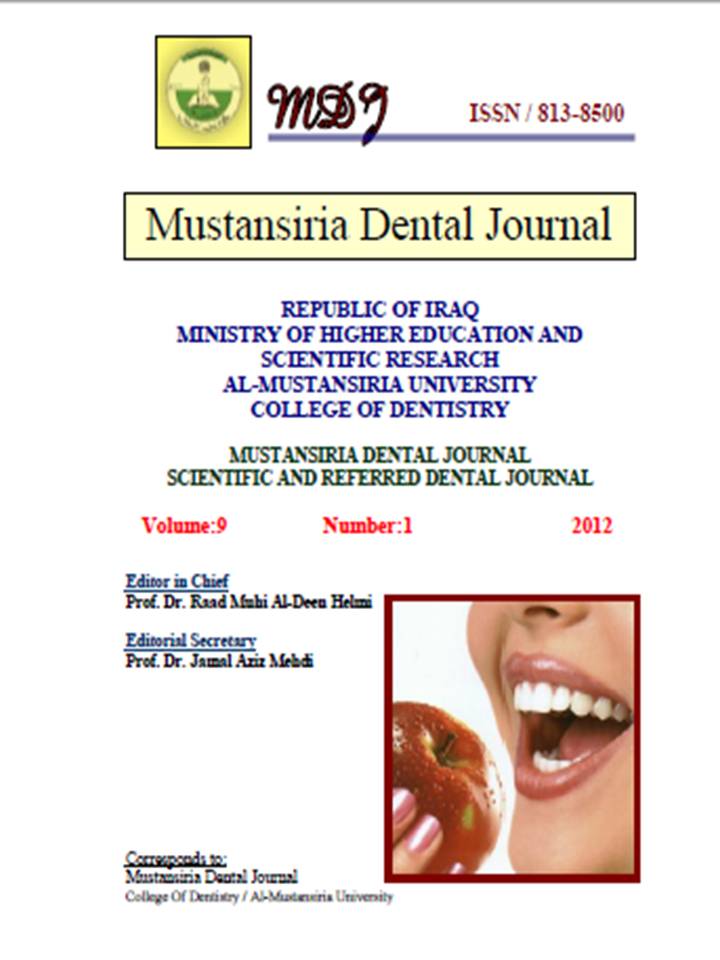A lateral cephalometric and arch width Study between class II division 1 malocclusion and Class II division 2 malocclusion (A comparative study)
DOI:
https://doi.org/10.32828/mdj.v9i1.239Keywords:
Key words: Orthodontic, cephalometric, Class II division 1 malocclusion, class II division 2 malocclusion, Arch width.Abstract
Background: the purpose of this retrospective study was to compare some
craniofacral cephalometric measurements and arch width dimensions between
subjects with class II division 1 and class II division 2 malocclusion in Iraqi
population.
Materials and methods: 60 digital true lateral cephalometric radiographs 30 for class
II division 1 and 30 for class II division 2 subjects (15 males, 15 females for each
group ) were selected from the files of the patients attending the orthodontic clinic
in the college of dentistry, university of Baghdad with an over jet more than 6 mm
and class II molar and canine relation. Also for each group a study model were
take to measure the arch width for both upper and lower arches. The inter molar,
inter premolar and inter canine measurements were carried out on study models.
The radio graphs were digitized by using the Auto CAD program in the personal
computer all the data compared by independent t- test.
Results and conclusions: For the dental arch width measurements the statistically
significant difference was found between the mandibular inter canine width and
maxillary inter molar width. The cephalometric results that class II division 1
showed a retrognathic mandible, and this due to the difference in SNB angle
between the two groups, the class II division 2 subjects had anterior position of the
mandible relative to the cranial base, more concave profile, great posterior face
height, horizontal growth, the mandibular inclination is interiorly, more deep bite,
and reduction in the mandibular inter canine width and maxillary inter molar
width .

Downloads
Published
Issue
Section
License
The Journal of Mustansiria Dental Journal is an open-access journal that all contents are free of charge. Articles of this journal are licensed under the terms of the Creative Commons Attribution International Public License CC-BY 4.0 (https://creativecommons.org/licenses/by/4.0/legalcode) that licensees are unrestrictly allowed to search, download, share, distribute, print, or link to the full texts of the articles, crawl them for indexing and reproduce any medium of the articles provided that they give the author(s) proper credits (citation). The journal allows the author(s) to retain the copyright of their published article.
Creative Commons-Attribution (BY)








